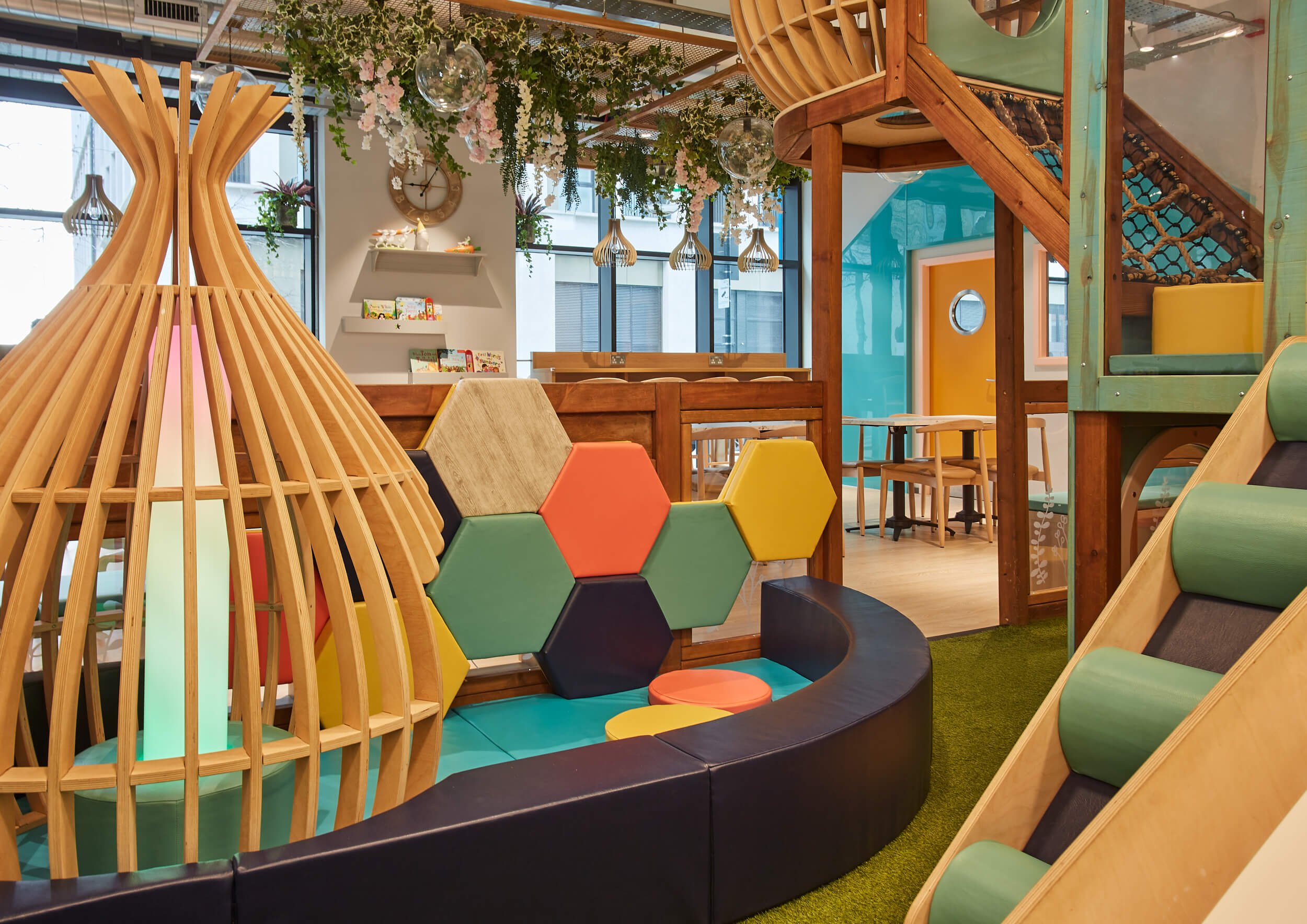Sensory Play for Toddlers
Our five senses are sound, taste, touch, smell, and sight. Children rely on these senses from birth to explore and find meaning in their environment. Any opportunities and resources to help them actively use their senses are welcome — sensory play does just that!
Sensory Play in your Play Cafe or Soft Play Centre
If you’re an owner of - or are setting up - a play cafe or soft play centre, weekly sensory play groups are a great addition to your offering alongside your indoor play equipment. However, a Tigerplay play structure provides plenty of opportunities for sensory play for toddlers. As part of our design mission, every play space designed by us is created to build self awareness and dexterity through the exploration of shape, colour, movement, construction and interaction within a stimulating play environment.
What is Sensory Play for Toddlers?
Sensory play refers to the activities designed to help stimulate the five senses of a toddler. When planning activities for your toddler, find activities that interest all five senses, not just one or two. The most popular forms of sensory play can take place with a plastic container or ‘tuff tray’.
Sensory Plastic Containers
Fill a container with rice, beans, sand, or water.
Toss in spoons, mini dinosaurs, cups, or sponges to encourage free play.
To hit all five senses, kids can visibly see the various colours of items; they can hear the rice or other fill item as it is moving around. Also, certain items may smell, such as rice or beans, and kids can touch everything available in the container.
While taste is harder to pull off, maybe one container could be full of cooked pasta, which is a kid-friendly way to introduce taste into sensory play.
Benefits of Sensory Play
The benefits of sensory play far outweigh the moments of engagement created during play. Other benefits of sensory play include:
Improves Language Skills
Your child will learn how to describe different textures, sounds, shapes, colours, etc., as they experience sensory play. Each new item you introduce during sensory play is a chance to expand your child's vocabulary.
Aids with Fine and Gross Motor Skills
Allowing your toddler to explore freely and touch items such as foods, fidget boards and toys helps to improve their fine motor skills. They can easily tell the texture of different foods and materials apart as they explore various activities. Tactile play (pouring, mixing, and building) is an excellent example of sensory play that facilitates the use of muscle groups and better movement coordination.
Sensory play also improves your toddler's gross motor skills, including crawling, jumping, and sitting. These activities focus on your child's large muscles in their legs, arms, and core. Such strengthening can efficiently improve later tasks such as throwing a ball.
Produces a Calming Effect
Sensory play can calm down hyperactive toddlers and stimulates those that show sluggish or disinterested behaviours. Sensory lighting and specialist sensory play equipment is perfect for creating a calming environment.
Enhances Social Interaction
As you encourage sensory play, at home or out and about, take the time to play with your child. Interact with them, model touching various objects and talk to them as you play. Your bond with one another will improve as you play together.
Get the Best Sensory Play Services from Tigerplay
Sensory play stimulates a child's senses. For proper development, toddlers need to learn about their environment, improve their social interactions, identify and regulate their feelings, and improve their motor skills — sensory play does all these and more!
At Tigerplay, we have innovative designs that inspire play spaces for shopping centres, cafes, family clubs, nurseries, etc. Contact us today to learn more about how you can get started with your one-of-a-kind sensory play area.



